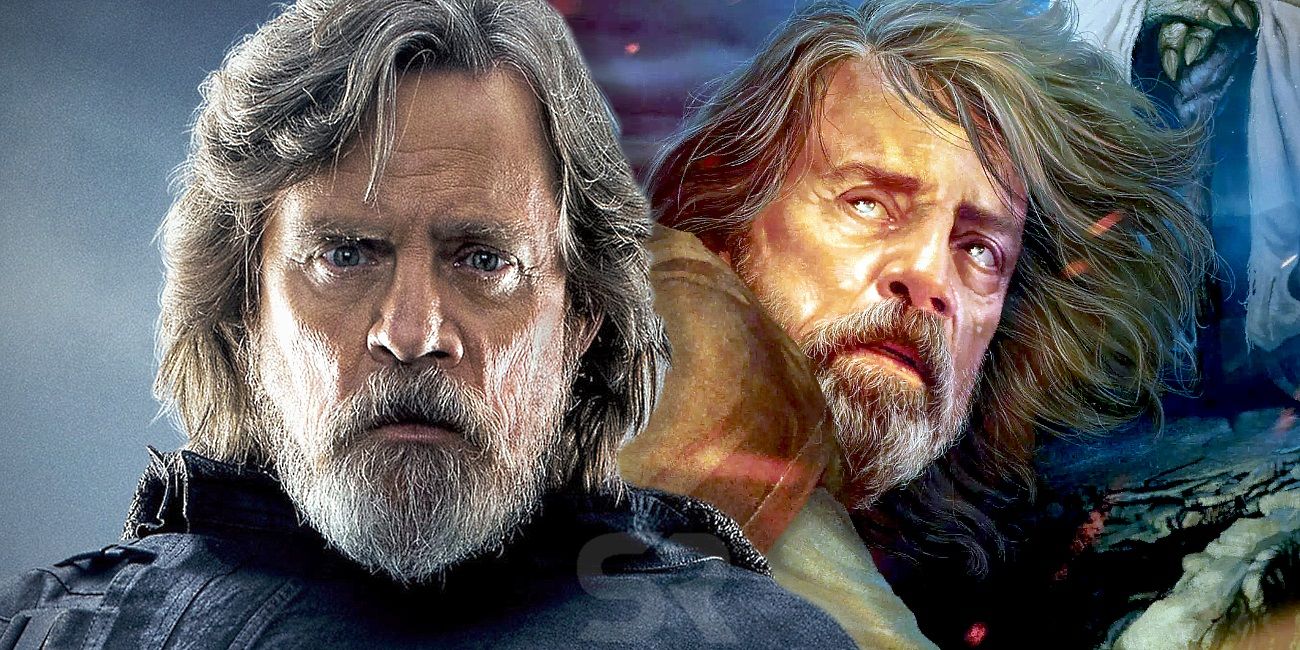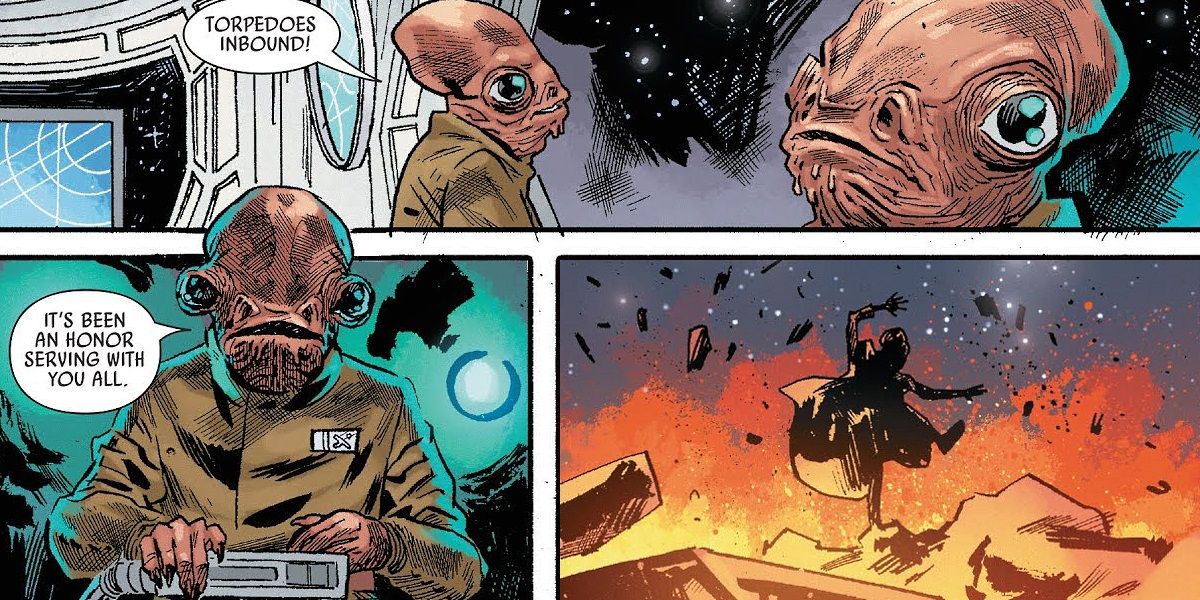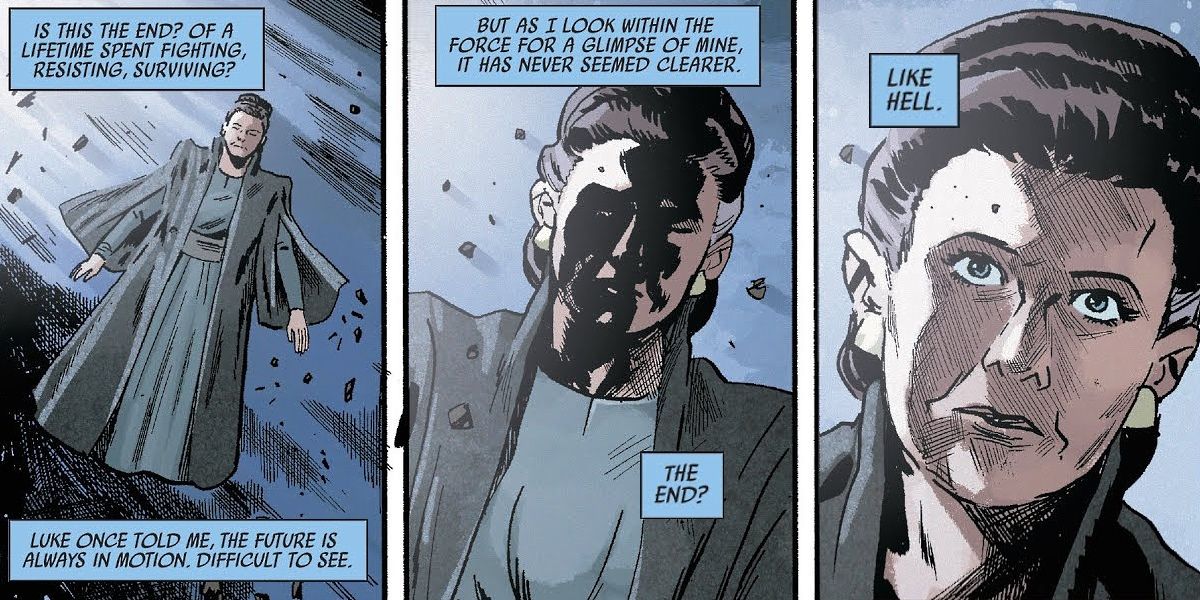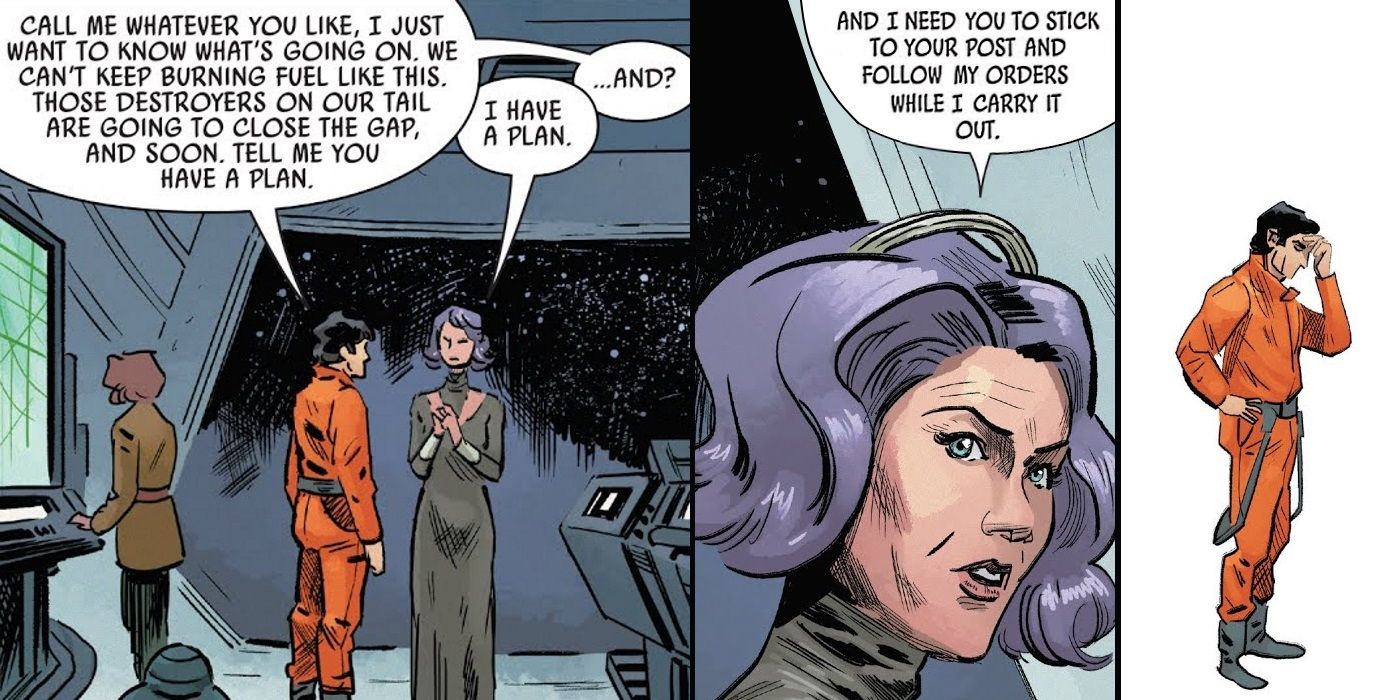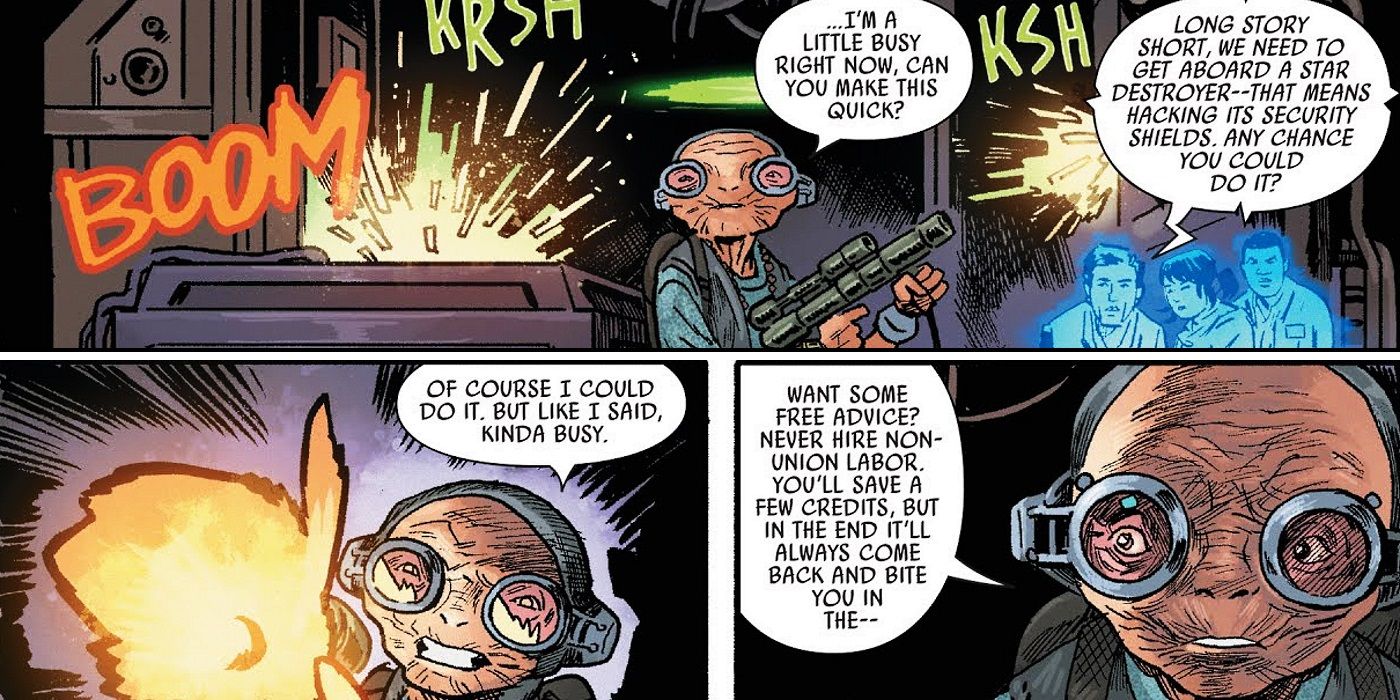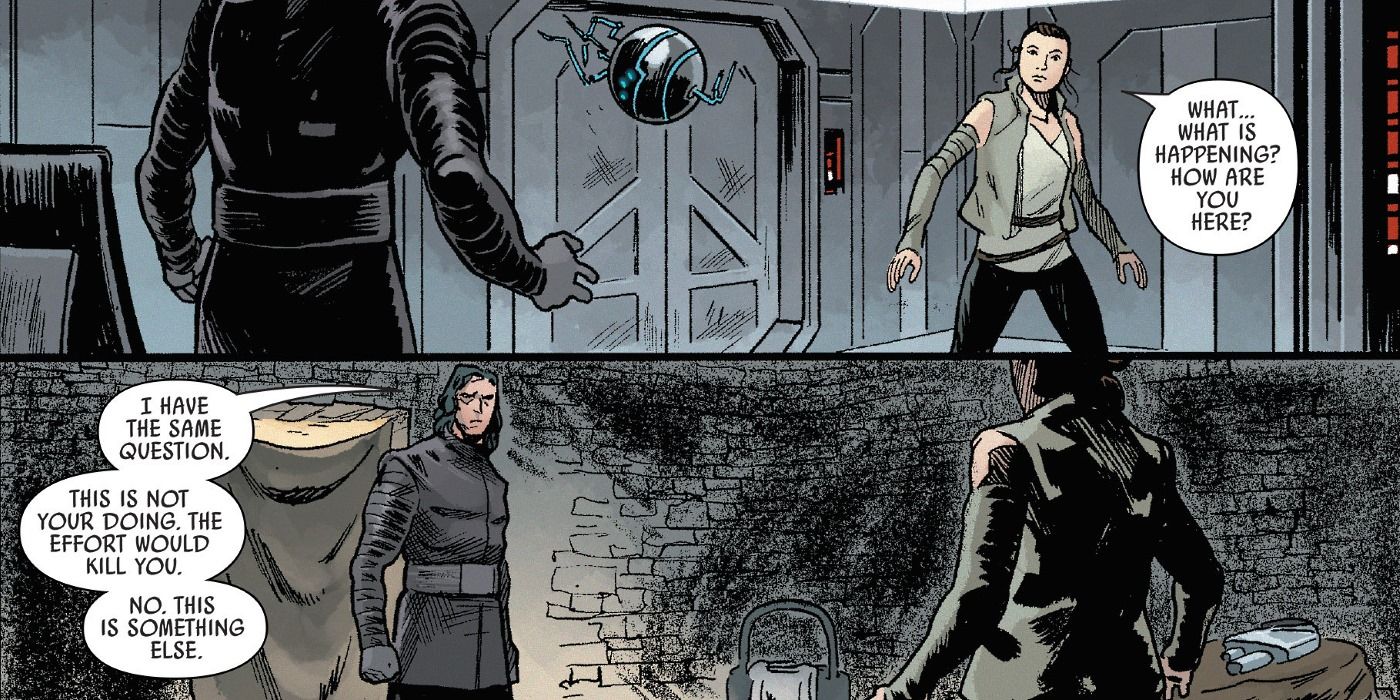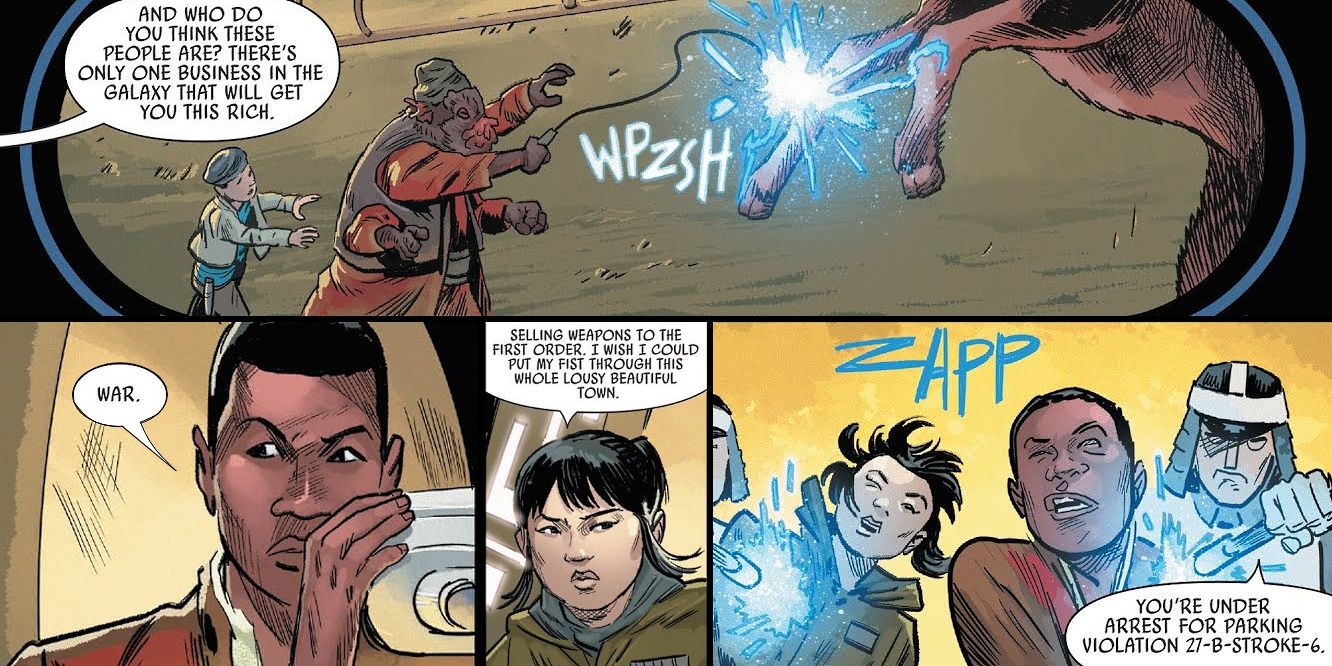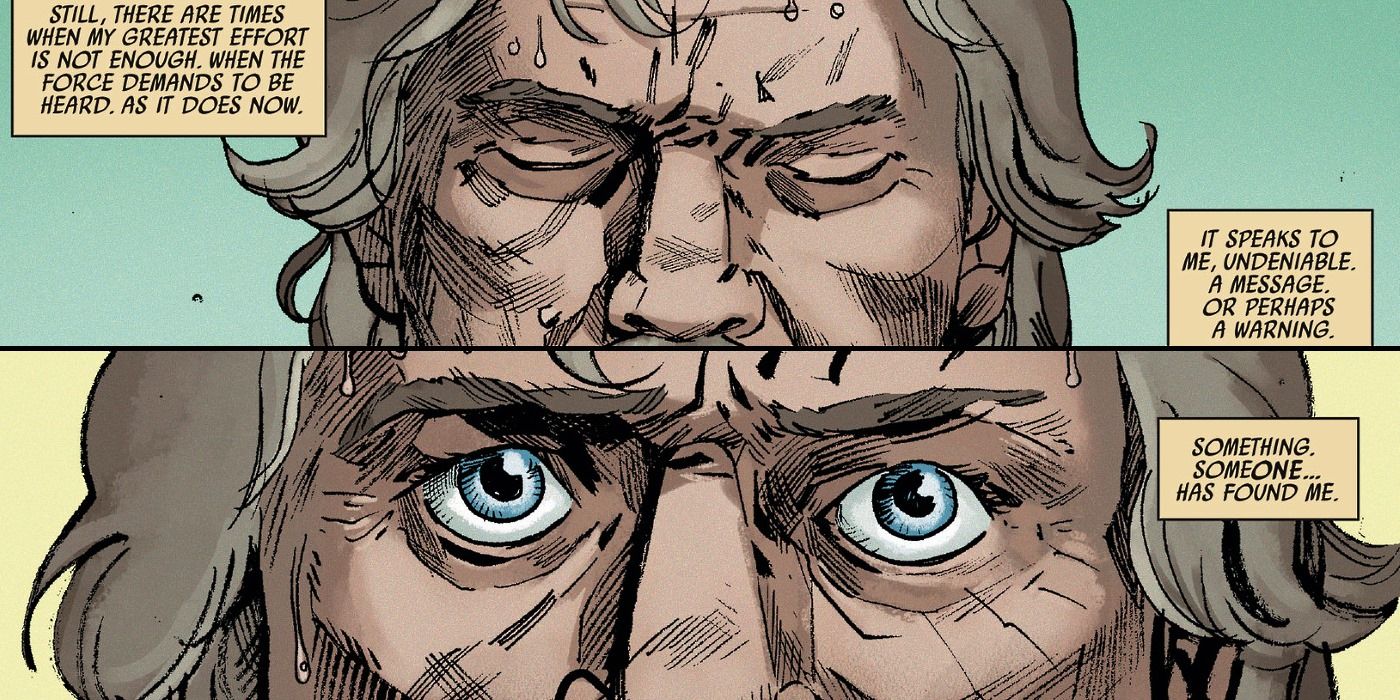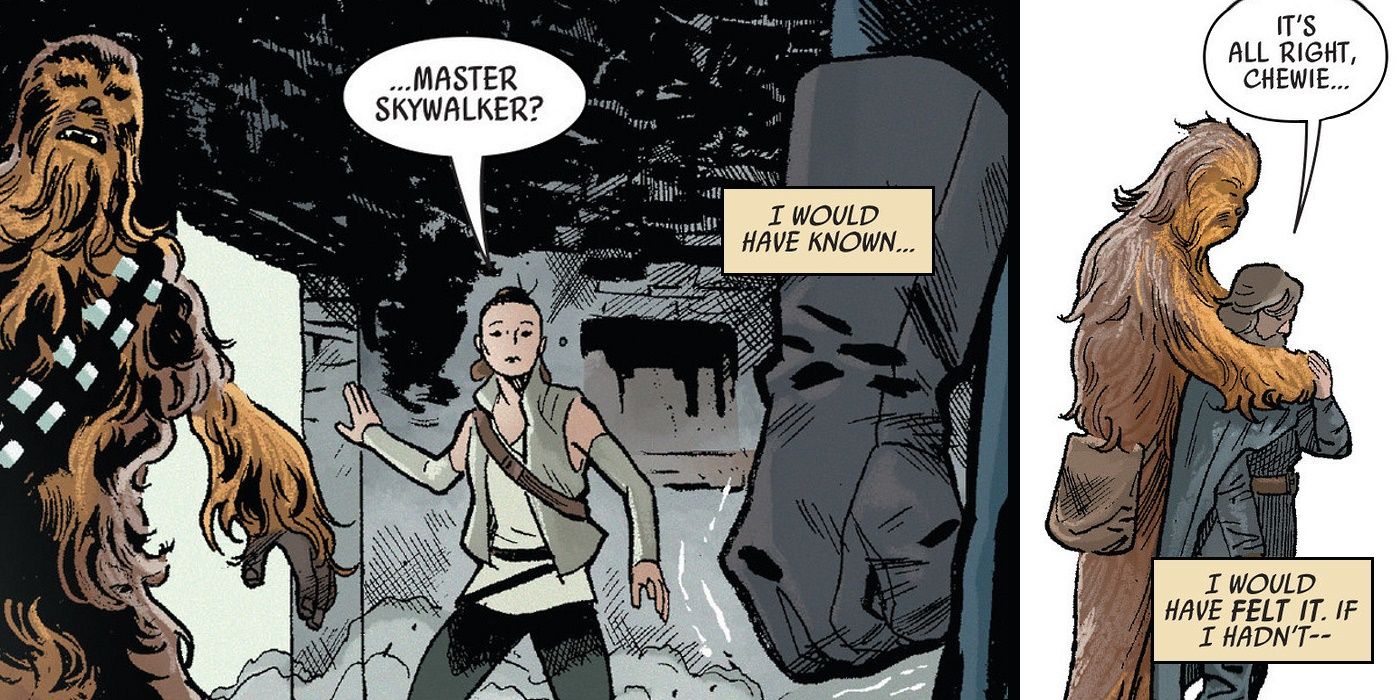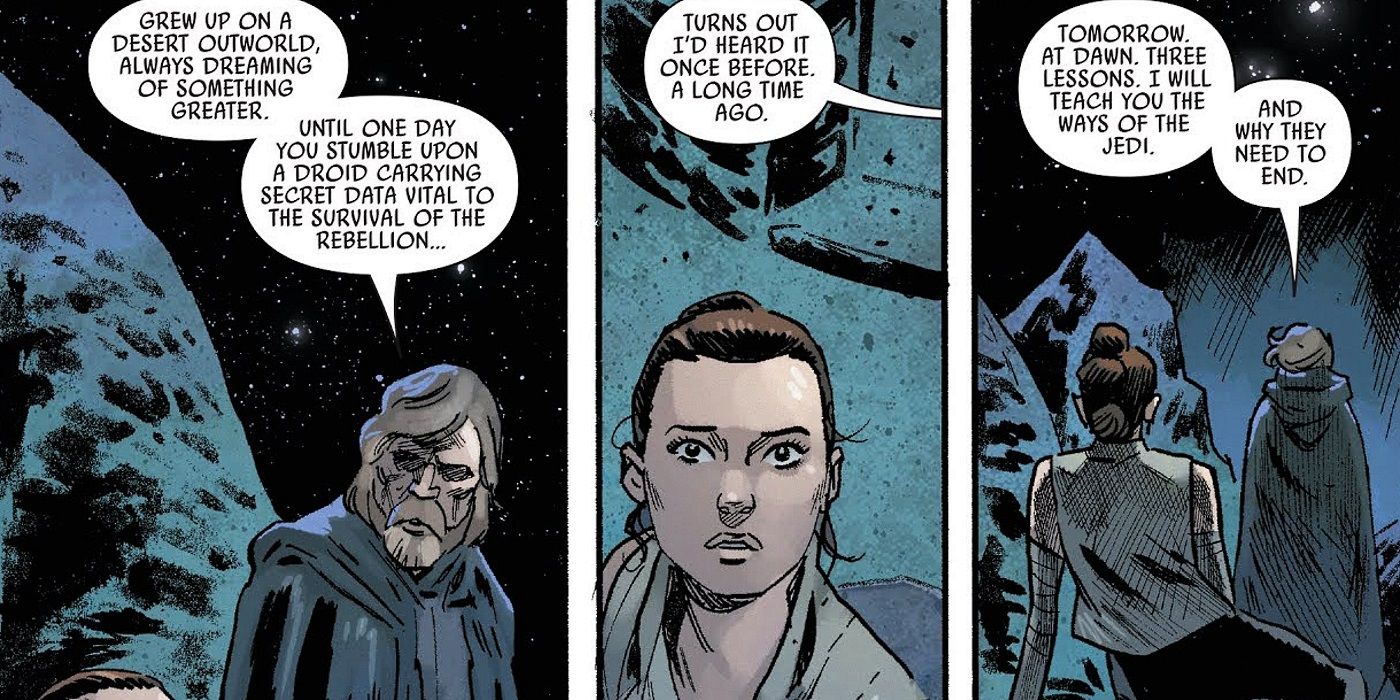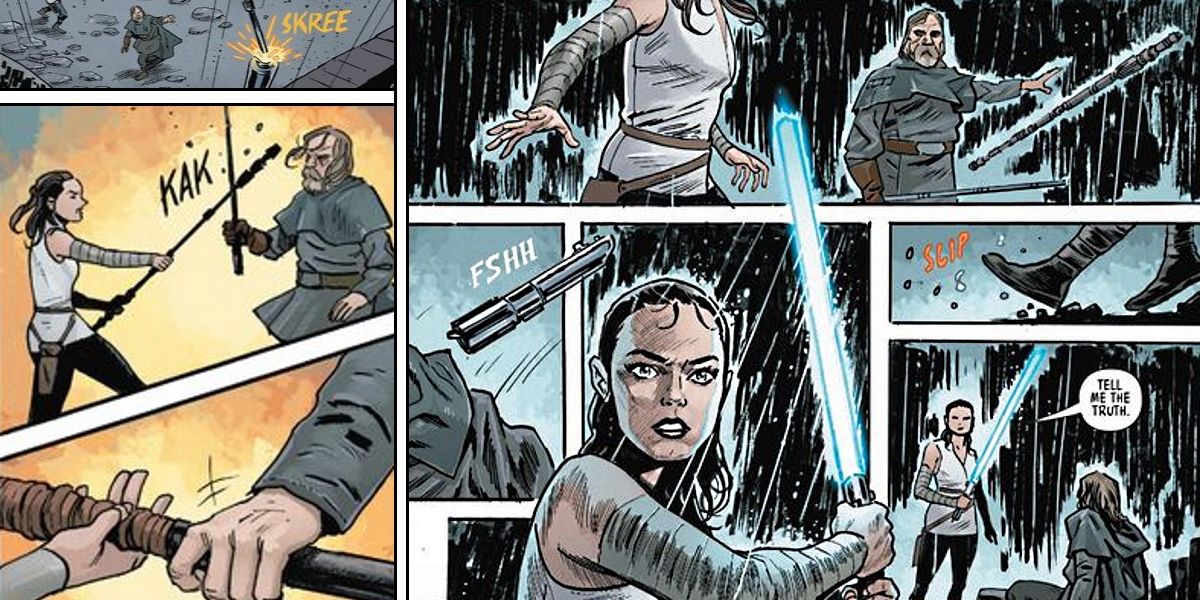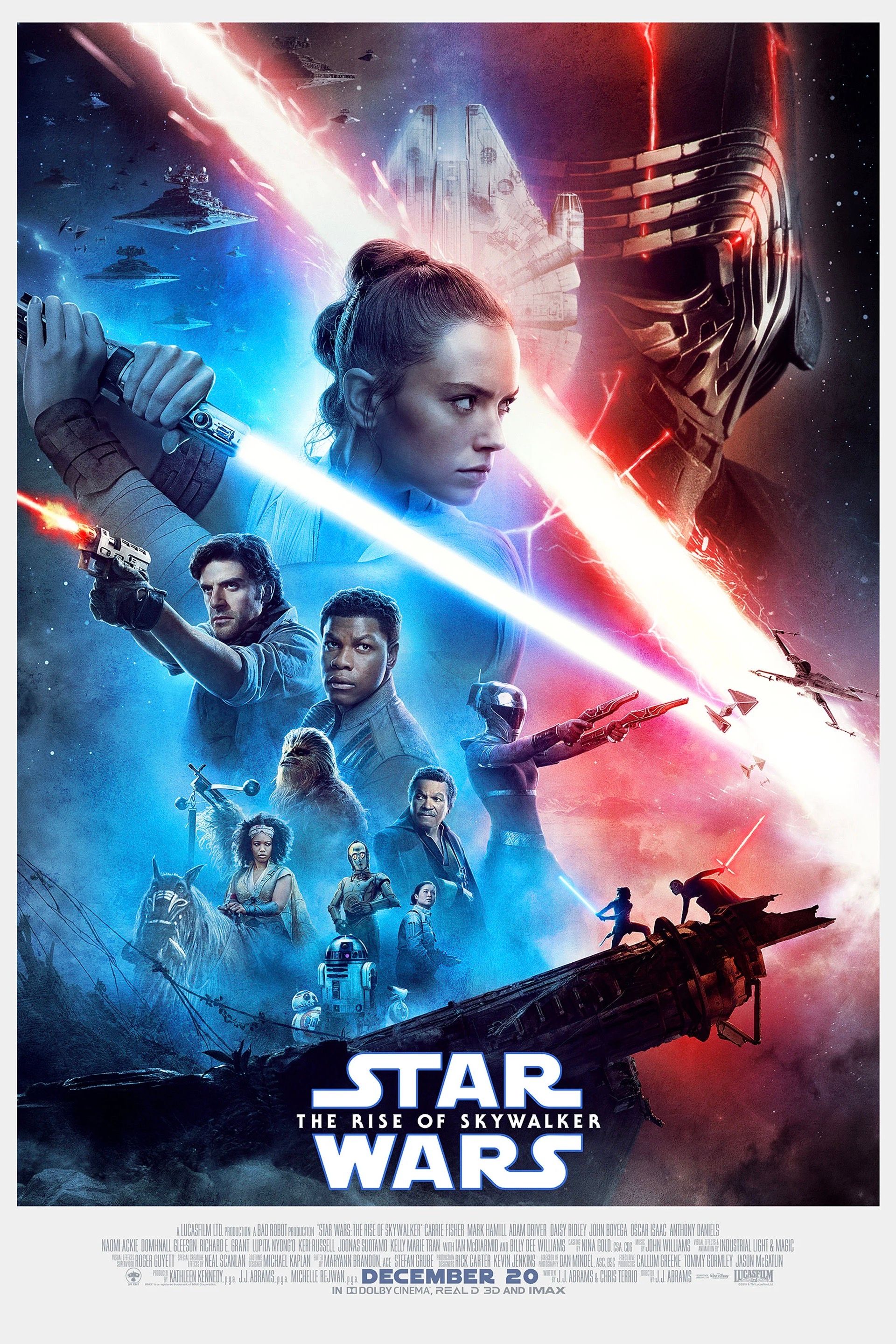Star Wars: The Last Jedi delivered what some fans call the worst moments in the franchise's history - so it's a good thing the comic adaptation is fixing the biggest ones. We use the term "fix" because in the minds of those who raise the strongest criticisms of the movie, these moments actually risk breaking the series lore.
There are other choices and plot twists which have proved just as controversial, breaking the legend and character of Luke Skywalker, denying fans scenes and plots they had longed to see, or simply delivering some sub-standard entertainment or faulty logic. And it's these most controversial details that The Last Jedi Adaptation comic from Marvel show in a new light.
Related: Every Major Reveal From Star Wars: The Last Jedi's Novelization
Some of the problems are solved, some explored in a new way, and some simply giving fans the actual story and character work they wanted on screen. It may not change every Last Jedi hater's mind, but they may be surprised to see how a small change can make all the difference. Let's get started.
- This Page: How The Last Jedi Comic Fixes Problems With The Movie
- Page 2: How The Last Jedi Comic Fixes Problems With Luke
Admiral Ackbar & Resistance Command's Death Matters
Plenty of time was spent in Star Wars: The Force Awakens getting to know the new command of the Resistance, a collection of both new faces and familiar ones from the original trilogy. Which seems a bit of a waste to some, since a single attack wipes them all out in an instant. Leia gets more time on screen, but for the others, no so much as a moment of realization that their war has finally come to an end.
RELATED: Admiral Ackbar's King Was Star Wars' Greatest Hero
The moment fans realized that group included Admiral Gial Ackbar, charges of irreverence for beloved characters were leveled. Thankfully, the comic gives Ackbar a final moment of dignity. The bridge officers are no longer clueless to their immediate demise, simply a background to Leia's intuition. It's Ackbar who breaks the silence when they realize they're doomed - thanking them all for the honor of having served beside them.
Leia Didn't Pass Out, She Just Saw Into Her Future
It's still the fate of General Leia Organa that proved far more of a talking point when Last Jedi was first released. Not that she survived the attack at all, even if the loss of Carrie Fisher made the presumed death scene even more meaningful in the moment. No, the controversy came when Leia seemed to instinctively call on The Force in her final moments of life to open her eyes, outstretch an arm, and propel herself through the vacuum of space and back onto the ship. A moment that can now be better understood, and the truth of Leia's Force flight through space shown from her perspective and with her own narration.
Leia's internal monologue may be more accurate, since the text boxes accompanying the images show her mind was still functioning while adrift in space. If not her mind, then her essence or awareness in the larger Force (the metaphysics of the Star Wars universe are hard to describe). The point is: Leia was conscious of her coming death, and in what she believed to be her final moments, attempted to search The Force for some vision of her future, if not guidance. And what she saw inspired her to move into action.
That alone makes the scene far less confusing, since it was unclear just how "present" Leia was in the sequence. Now the only question is whether the future she saw for herself was merely one that survived, one that saw her reunited with her lost brother, or one stretching even farther into the future.
Related: Fans Are Wrong To Hate Leia's 'Mary Poppins' Moment
Admiral Holdo Tells Poe She Has a Plan
Likely the most frustrating choice for those unfulfilled by Star Wars: The Last Jedi is the means through which Poe Dameron's story is given conflict. Basically, he and Finn spend most of the movie working to save the Resistance, since its new leader Admiral Holdo has basically given up. That's how it seems, at least, since she refuses to even confirm that she has a plan. Since he's watching his comrades die with no plan in sight, his eventual mutiny is justified. But only then does Holdo reveal she DID have a plan and simply chose to let Poe spin out of control... but no hard feelings.
The comic plays out Admiral Holdo's promotion in largely the same way, including her being less than charmed by the recently-demoted Captain Dameron. Not actively hostile and belittling like the movie, but still unmoved. Yet, as the hero of the Resistance being groomed by Leia for future leadership, Poe has to ask Holdo to confirm that she actually does have a plan. She responds that yes, she has a plan. Which means Poe's doubts and need to take action are actually a character arc, and not common sense in the face of slaughter.
The Audience Sees The Fun Side of Maz Kanata's Call
Even if fans would have preferred that Maz Kanata return in a meaningful, physically present role for Star Wars: The Last Jedi, she does make an appearance via hologram call. The purpose of the call is for the heroes to get a lead on a person who could help them sneak onto the Imperial ship tracking the Resistance Fleet. That's the purpose to the plot, at least. The purpose it plays for the movie is... well, hard to explain. Maybe some comic relief?
Related: Maz Kanata Is The Worst New Star Wars Character
Instead of a usual hologram conversation, the heroes interrupt Maz in the middle of a firefight. The result is a scene that feels more like a video game fetch quest, or a joke only halfway delivered. Or perhaps a realization that having characters sit around and conduct the call normally would be... boring? Either way, the comic at least follows the call from Maz's side so readers can actually enjoy her action hero chops.
The Kylo Ren/Rey Link is Force Projection
No, we're not going to be revisiting the Force projection used to send Luke across the galaxy just yet. We're referring instead to the scenes shared by Rey and Kylo Ren, able to see and interact with each other in their respective locations. But since the movie only shows the actors talking to the other offscreen, it's not exactly clear what the characters are physically experiencing, or even witnessing. And the filmmakers don't seem too interested in clarifying it outside of cinematic conventions (having Kylo shirtless was actually added so audiences would know Rey could see his current physical form).
The Last Jedi comic solves the issue perfectly, showing each character suddenly appear before the other, explaining their startled reactions. It's only when Rey shoots through Kylo that each realizes the illusion. An illusion that, when depicted in this way, seems similar or even identical to Luke's own Force projection in the final act. The similarities could be noted with some imagination, but explicitly having Luke turn Snoke's trick against the First Order makes it a bit more satisfying.
RELATED: Rey Really Did Consider Killing Kylo Ren in Last Jedi
The Canto Bight Sequence is Mercifully Short
For those who love every part of the movie, the sojourn to Canto Bight and its bustling casino and natural splendor is fun, philosophically poignant, and meaningful. For those detractors, it's an ultimately irrelevant detour pursuing the same slapstick and silliness as the prequel trilogy.
The point is, it's divisive. Since the comic has to be efficient with storytelling for the sake of page counts, the Canto Bight sequences are limited to a handful of them, far shorter than the film's version. The fathier chase is only a few panels, so fans who felt it wasted time should be pleased.
Page 2 of 2: How The Last Jedi Comic Fixes Problems With Luke
Luke Isn't (Completely) Cut Off From The Force
For all the reasons that Star Wars: The Last Jedi's version of Luke Skywalker disappointed, one of the most essential is his removal from, and denial of The Force. The novels, comics, and video games showing Luke growing more experienced in his knowledge of The Force made sense, and in the final moments of Star Wars: The Force Awakens, it seemed that Rey was meeting that same old, wise, powerful Jedi.
Instead, he was revealed to be anything but moments later, tossing his father's lightsaber over his shoulder, and returning to his hermit lifestyle, denying a connection to The Force. But the first issue of The Last Jedi comic reveals the truth: that to deny The Force was no easy task... and Luke remains somewhat linked to the larger universe.
RELATED: Star Wars 9: Every Rumor, Leak, and Theory
Specifically, in him realizing that he had been "found" not long before Rey began her journey to Ahch-To. Here's part of Luke's monologue, which opens the series:
This is the final lesson of my Jedi training. Learned for myself, here on this ancient, forgotten island. That the only thing more difficult than learning to feel The Force, to let it in... is learning to block it out.
Still, there are times when my greatest effort is not enough. When The Force demands to be heard. As it does now. It speaks to me, undeniable. A message. Or perhaps a warning. Something. Someone... has found me.
The comic series should probably be sought out by fans of Luke for his inner conflicts and emotions alone, with writer Gary Whitta folding in several larger themes. The most important, at least in explaining his disdain for the Jedi, is his feeling that he was "molded into a weapon to confront and destroy their greatest enemy - my father." Luke was used, as he sees it, and is determined to have no part in such teachings or temptations again.
Luke Finds Out Kylo Ren Killed Han Solo
All things considered, fans were understandably disappointed to not only endure the death of Han Solo, but to know that Luke learned of his friend's death at the hand of his own apprentice and nephew... In a scene the audience just didn't get to see. That was remedied in a Star Wars: The Last Jedi deleted scene, but it's here in the comic where it should always have been. And with one major new detail.
Related: Why Luke Changed Costume Straight After Force Awakens' Ending
In the deleted scene, Luke is struck with anger and sadness at confirmation of Han's death. Internally, he realizes that it is only the first of many revelations he could have known, could have felt, if he had not kept The Force at bay. The fact that Rey's search for him proved more powerful may be telling, but the scene also shows Luke using The Force absent-mindedly. As Luke's emotions rise, nearby dishes begin to levitate and shake - only subsiding when Chewie embraces him. A nice touch between old friends, but also a meaningful glimpse at how love can turn even good Jedi to rage - Luke included.
Luke Recognizes Rey is Basically a New Him
How one feels about the man Luke Skywalker became is a matter of opinion, but it's hard to argue that the time he spends not saying anything, or doing anything but refusing to talk to Rey is the most satisfying watch. Again, the inner monologue comes through in the comic... as well as actual dialogue, since Luke speaks to Rey like something a bit closer to a regular person (and not an actual hermit).
For starters, Luke claims R2-D2 filled him in on Rey's backstory, allowing him to also note that her life is another echo of his own, and even his father's (the film simply has him say he will train her, and nothing else). Luke also realizes Rey's eagerness to fight slots him into the Obi-Wan Kenobi role as history repeats itself. It doesn't vastly change the plot, but it's nice to know Luke actually has gained some wisdom and perspective over the course of his life.
Rey Doesn't 'Beat' Luke in Battle
After Luke is finally able to see what Rey does - Kylo Ren physically present on Ahch-To (a well-timed twist, Snoke) - the tempers boil over. Rey begs Luke to come with her to turn Kylo Ren back to the light, while Luke refuses. Words soon come to blows, culminating in Rey calling on Luke's lightsaber, and pressing the old Jedi Knight down to his back. Another loss for Luke, and a serious demonstration of Rey's superiority, despite so little training.
At least, that's the movie version of how it happened. According to one panel from artist Michael Walsh, Luke Skywalker ends up on his back due specifically to a slip, not Rey's supremacy in staff-to-staff combat. Some took exception with the idea that Rey - through either skill or willpower - could beat Luke, claiming it was ridiculous. According to this comic tweak, Rey may have benefited from Luke's age, emotions, or questionable footing, if anything.
Star Wars: The Last Jedi Adaptation is available now from Marvel Comics.

